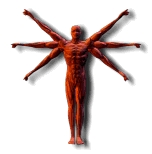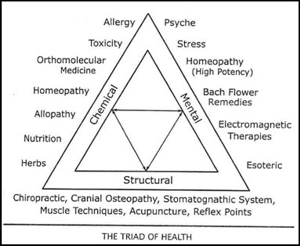 What is Applied Kinesiololgy?
What is Applied Kinesiololgy?
Applied kinesiology (AK) is the study of muscles and the relationship of muscle strength to health. It incorporates a system of manual muscle testing and therapy. AK is based on the theory that an organ dysfunction is accompanied by a specific muscle weakness. Diseases are diagnosed through muscle-testing procedures and then treated.
Dr. Christine is an Applied Kinesiologist who draws on complementary therapies to achieve total well being including: acupuncture, chiropractic, massage, nutrition, exercise and stress management.
Applied kinesiology is based on principles of functional neurology, anatomy, physiology, biomechanics and biochemistry as well as principles from Chinese medicine, acupuncture and massage. It was developed from traditional kinesiology in 1964 by George G.  Goodheart, a chiropractor from Detroit, Michigan. He observed that each large muscle relates to a body organ. A weakness in a muscle may mean that there is a problem in the associated organ. Goodheart found that by treating the muscle and making it strong again, he was able to improve the function of the organ as well. Goodheart also found that painful nodules (small bumps) may be associated with a weak muscle. By deeply massaging the muscle, he was able to improve its strength.
Goodheart, a chiropractor from Detroit, Michigan. He observed that each large muscle relates to a body organ. A weakness in a muscle may mean that there is a problem in the associated organ. Goodheart found that by treating the muscle and making it strong again, he was able to improve the function of the organ as well. Goodheart also found that painful nodules (small bumps) may be associated with a weak muscle. By deeply massaging the muscle, he was able to improve its strength.
This therapy is designed to be a part of a holistic approach to preventive medicine. The goals of applied kinesiology are to (1) restore normal nerve function, (2) achieve normal endocrine, immune, digestive and other internal organ functions, (3) inter-vene early in degenerative processes to prevent or delay pathological conditions, and to (4) re-store postural balance, correct gait (walking) impairment and improve range of motion.
-
AK is performed with no other equipment than the practitioners hands.
-
It assess the relative strength of the organs, glands and meridians.
-
It can uncover structural problems such as rib misalignment, spinal subluxations, or tooth problems.
-
It can identify acupuncture points needing treatment.
-
It can reveal deficiency conditions requiring herbs, or other homeopathic remedies.
-
It facilitates the assessment of infections, toxicity, degeneration or regeneration of the tissue.
-
It facilitates a communication with the patients body and mind.
According to applied kinesiology, common internal causes of muscle weakness include:
- Dysfunction of nerve supply (nerve interference between spine and muscles).
- Impairment of lymphatic drainage.
- Reduction of blood supply.
- Abnormal pressure in cerebral fluid affecting nerve-to-muscle relationships.
- Blockage of an acupuncture meridian.
- Imbalance of chemicals.
- Dysfunction of organs or glands.
- Excesses of deficiencies in nutrition.

